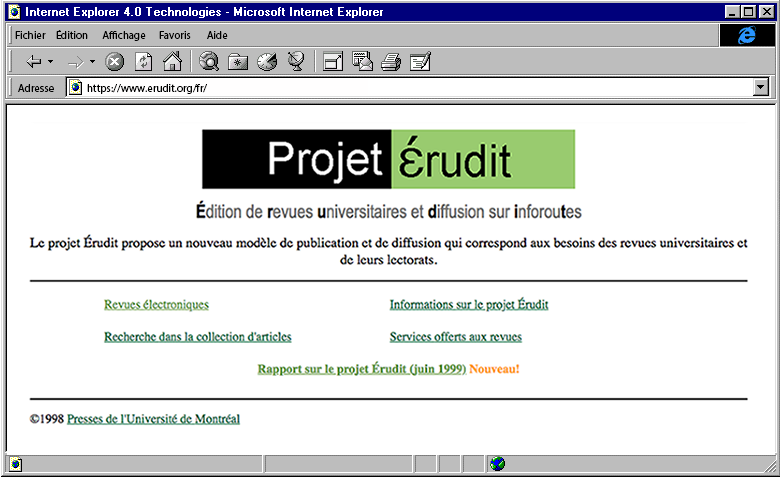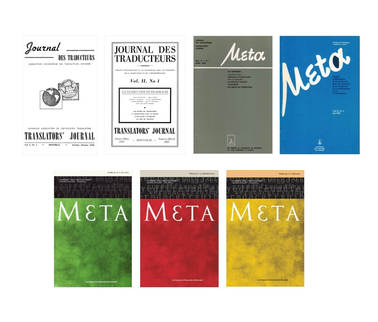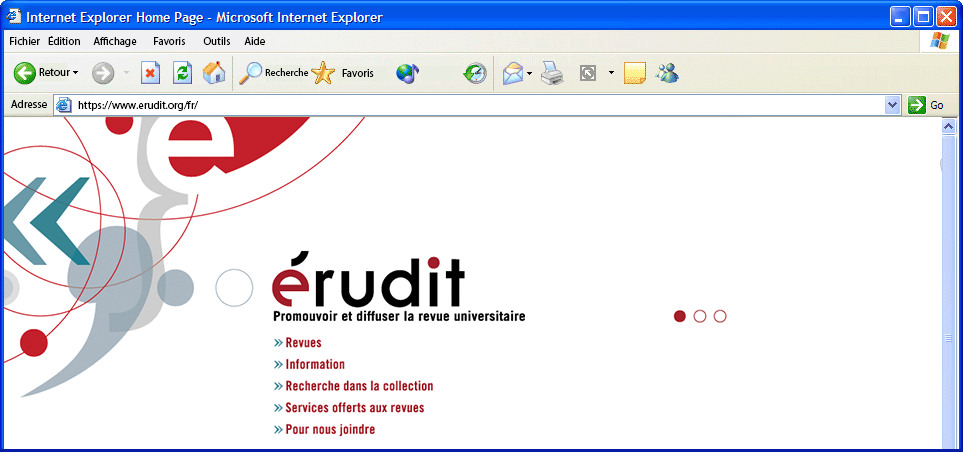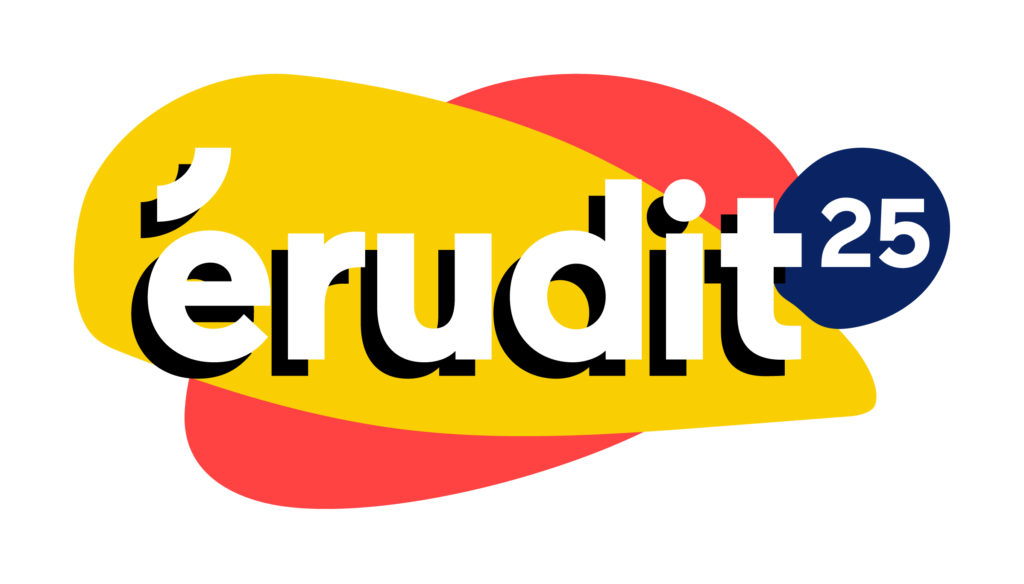Beaudry, G., Boucher, M., Niemann, T. & Boismenu, G. (2009). Érudit : le numérique au service de l’édition en sciences humaines et sociales. Mémoires du livre / Studies in Book Culture, 1 (1). https://id.erudit.org/iderudit/038637ar
Boismenu, G. & Beaudry G. (2014), Du concept à l’outil : penser et instrumenter l’édition numérique de revues savantes, Les revues à l’ère numérique. https://www.erudit.org/fr/livres/hors-collection/partie-iii-les-revues-a-lere-numerique/000262li/
Cameron-Pesant, S. (2018). Usage et diffusion des revues savantes québécoises en sciences sociales et humaines : analyse des téléchargements de la plateforme Érudit. Recherches sociographiques, 59 (3), 365–384. https://doi.org/10.7202/1058719ar
Cameron-Pesant, S., Sainte-Marie, M., Jansen, Y. & Larivière, V. (2018). Criminologie à portée de clic : analyse de l’usage de la revue numérique. Criminologie, 51 (1), 111–142. https://doi.org/10.7202/1045310ar
Canal Savoir (2018) « La création de la plateforme Érudit », https://savoir.media/erudit/clip/la-creation-de-la-plateforme-erudit
Henry, G., Van Bellen S., Niemann, T (2023). « Retour sur 25 ans de développement de la plateforme Érudit » Assises de la francophonie scientifique 2023. https://apropos.erudit.org/25years-erudit/?lang=en
Paquin, É. (2013). Les modèles économiques de l’accès libre : réflexions à partir de l’expérience d’Érudit. Documentation et bibliothèques, 59 (3), 155–160. https://doi.org/10.7202/1018845ar
Vanasse, A. (2010). Le projet « Érudit ». Lettres québécoises, (138), 3–3. https://id.erudit.org/iderudit/62355ac
Ward, M., & Lavoie, J. (2016). A library-publisher partnership for open access: building an innovative relationship between scholarly publishers and academic libraries. LIBER Quarterly, 25(4), 189–204. http://doi.org/10.18352/lq.10139











